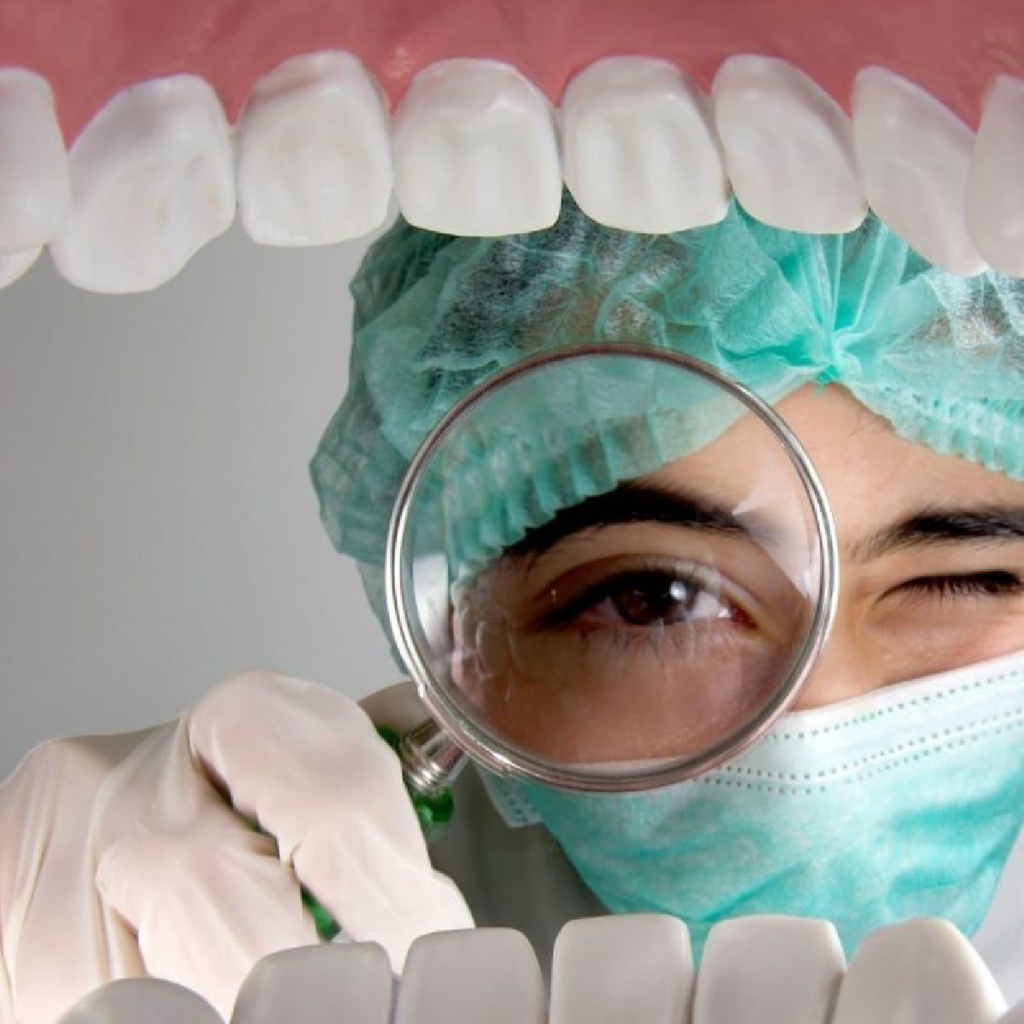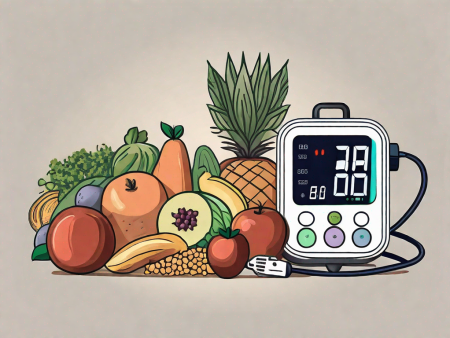Learn about the signs and symptoms of oral cancers and diseases in this informative article.
Signs of Oral Cancers and Diseases: What to Look For
Oral cancers and diseases can be a serious health concern, so it’s important to be aware of the signs and symptoms to look out for. Understanding these conditions and being able to recognize their early warning signs can lead to early detection and better treatment outcomes. In this article, we will delve into the basics of oral health, common oral diseases, the signs of oral cancer, risk factors, and prevention techniques.

Understanding Oral Cancers and Diseases
Before we dive into the signs and symptoms, let’s first understand what exactly we’re dealing with. Oral cancers and diseases cover a wide range of conditions that affect the mouth, tongue, and oral cavity. Maintaining good oral health is crucial to preventing these issues, as they can have a significant impact on your overall well-being.
When it comes to oral health, proper oral hygiene practices play a key role. Brushing your teeth twice a day, flossing daily, and visiting your dentist regularly are all essential steps to maintain a healthy mouth. These practices help protect against tooth decay, gum disease, and various oral infections.
Furthermore, a balanced diet that is low in sugary and acidic foods can help prevent oral health problems. Avoiding tobacco and excessive alcohol consumption are also important, as they are known risk factors for oral cancers and diseases.
Now let’s take a closer look at some of the most common oral diseases and their impact on oral health.
Gum Disease
Gum disease, also known as periodontal disease, affects the tissues supporting the teeth and can lead to tooth loss if left untreated. It is caused by the buildup of plaque, a sticky film of bacteria that forms on the teeth. If not removed through regular brushing and flossing, plaque can harden into tartar, which can only be removed by a dental professional.
Indicators of gum disease include red, swollen, or bleeding gums, as well as persistent bad breath. In its early stages, gum disease is known as gingivitis, which is reversible with proper oral hygiene and professional dental care. However, if left untreated, it can progress to periodontitis, a more severe form of gum disease that can cause irreversible damage to the gums and bone supporting the teeth.
Oral Thrush
Another common oral disease is oral thrush, which is caused by an overgrowth of a fungus called Candida. It results in white patches on the tongue and inside the mouth, along with pain and discomfort. Poor oral hygiene, certain medications, and a weakened immune system can contribute to the development of oral thrush.
Oral thrush is more common in infants, older adults, and individuals with weakened immune systems, such as those with HIV/AIDS or undergoing cancer treatment. Treatment typically involves antifungal medications and improving oral hygiene practices to prevent recurrence.
Aside from gum disease and oral thrush, there are many other oral diseases and conditions that can affect your oral health. These include tooth decay, oral cancer, dry mouth, canker sores, and temporomandibular joint (TMJ) disorders, among others.
Understanding these diseases and their impact on oral health is crucial for early detection and prompt treatment. Regular dental check-ups, along with maintaining good oral hygiene practices and a healthy lifestyle, can help prevent and manage these conditions, ensuring a healthy and vibrant smile.
Recognizing the Signs of Oral Cancer
While oral cancers are less common than other oral diseases, they can be life-threatening if not detected and treated early. Knowing the physical and non-physical symptoms of oral cancer can make a significant difference in diagnosis and treatment.
Oral cancer is a type of cancer that affects the mouth, including the lips, tongue, gums, and the lining of the cheeks and throat. It can develop in any part of the oral cavity and can spread to other parts of the body if left untreated.
Physical symptoms of oral cancer may include persistent mouth sores that do not heal, lumps or growths in the mouth, a white or red patch on the gums, tongue, or lining of the mouth, and difficulty swallowing or speaking. These physical signs can be alarming and should not be ignored. It is essential to consult a healthcare professional if you experience any of these symptoms.
Furthermore, unexplained bleeding or numbness in the mouth, as well as changes in the fit of dentures, can also be signs of oral cancer. These symptoms may indicate that the cancer has progressed and is affecting the surrounding tissues and nerves. Early detection is crucial in improving the chances of successful treatment and recovery.
Non-Physical Symptoms of Oral Cancer
Oral cancers can also have non-physical symptoms that may indicate a problem. These can include unexplained weight loss, fatigue, and a persistent sore throat. These non-physical signs may seem unrelated to oral health, but they can be indicative of underlying issues that require attention from a healthcare professional.
Unexplained weight loss can occur when the cancerous cells in the mouth interfere with the normal functioning of the digestive system. Fatigue, on the other hand, can be a result of the body’s immune response to the cancer cells. The persistent sore throat may be a sign that the cancer has spread to the throat or the surrounding lymph nodes.
It is important to note that these non-physical symptoms can also be caused by other health conditions. However, if you experience any of these symptoms in conjunction with the physical signs mentioned earlier, it is crucial to seek medical advice for a proper diagnosis.
Regular dental check-ups are essential in detecting oral cancer at an early stage. Dentists are trained to recognize the signs and symptoms of oral cancer and can perform a thorough examination of your mouth and throat. They may also recommend further tests, such as a biopsy, to confirm the diagnosis.
In conclusion, being aware of the physical and non-physical symptoms of oral cancer is vital for early detection and treatment. If you notice any changes or abnormalities in your mouth or experience any of the mentioned symptoms, do not hesitate to consult a healthcare professional. Remember, early detection can save lives.
Identifying Oral Diseases
Identifying common oral diseases is crucial for timely treatment and prevention of complications. Let’s take a closer look at specific oral diseases and their signs.
Signs of Gum Disease
Gum disease often presents with telltale signs such as bleeding gums, swollen or tender gums, receding gums, persistent bad breath, and loose teeth. If you notice any of these symptoms, it’s important to consult your dentist for a thorough examination and appropriate treatment.
Gum disease, also known as periodontal disease, is a chronic inflammatory condition that affects the gums and supporting structures of the teeth. It is caused by the buildup of plaque, a sticky film of bacteria that forms on the teeth. When plaque is not removed through proper oral hygiene practices, it can harden into tartar, which can only be removed by a dental professional.
If left untreated, gum disease can progress and lead to more severe complications, such as gum recession, tooth loss, and even systemic health issues like heart disease and diabetes. Therefore, early detection and intervention are crucial in managing gum disease.
Indicators of Oral Thrush
Oral thrush can cause white, creamy patches on the tongue, inner cheeks, and roof of the mouth. If you experience discomfort or pain while eating or drinking, or notice these patches in your mouth, it’s essential to seek medical advice for diagnosis and treatment.
Oral thrush, also known as oral candidiasis, is a fungal infection caused by an overgrowth of Candida yeast in the mouth. This condition commonly affects individuals with weakened immune systems, such as those with HIV/AIDS, diabetes, or undergoing chemotherapy.
In addition to the white patches, oral thrush may also cause a burning sensation, loss of taste, and difficulty swallowing. It is important to note that oral thrush can be easily treated with antifungal medications prescribed by a healthcare professional.
Preventing oral thrush involves practicing good oral hygiene, including regular brushing and flossing, as well as avoiding excessive use of antibiotics, which can disrupt the natural balance of microorganisms in the mouth.
Risk Factors for Oral Cancers and Diseases
While anyone can develop oral cancers and diseases, certain risk factors can increase the likelihood of their occurrence. These factors can be divided into lifestyle factors and genetic predisposition.
Lifestyle Factors and Oral Health
Engaging in habits like smoking or using tobacco products significantly increases the risk of oral cancers and diseases. Smoking exposes the oral cavity to harmful chemicals and toxins, which can damage the cells and tissues, leading to the development of oral cancers. Similarly, using tobacco products, such as chewing tobacco or snuff, can also contribute to the increased risk of oral health complications.
Another lifestyle factor that can impact oral health is excessive alcohol consumption. Alcohol can irritate the oral tissues and increase the risk of oral cancers. Chronic alcohol abuse can also weaken the immune system, making it more difficult for the body to fight off infections and diseases in the oral cavity.
On the other hand, maintaining a healthy lifestyle by avoiding these habits can greatly reduce the risk of oral health complications. Quitting smoking and using tobacco products can significantly improve oral health and decrease the chances of developing oral cancers. Limiting alcohol consumption to moderate levels, as recommended by healthcare professionals, can also help maintain oral health.
Genetic Predisposition and Oral Diseases
Genetics can also play a role in oral health. Some individuals may be more predisposed to developing certain oral diseases due to their genetic makeup. Genetic factors can influence the structure and function of the oral tissues, making some individuals more susceptible to infections, inflammations, and other oral health issues.
If you have a family history of oral cancers or diseases, it’s important to inform your dentist. Your dentist can help monitor your oral health more closely and provide appropriate preventive measures. Regular dental check-ups and screenings can help detect any early signs of oral diseases, allowing for timely intervention and treatment.
In addition to genetic predisposition, other factors such as age, gender, and certain medical conditions can also influence the risk of oral diseases. For example, older individuals are generally at a higher risk of developing oral cancers and diseases due to the cumulative effects of lifestyle habits and natural aging processes. Hormonal changes during pregnancy can also affect oral health, increasing the risk of gum diseases.
Overall, understanding the risk factors for oral cancers and diseases is crucial for maintaining good oral health. By adopting a healthy lifestyle and seeking regular dental care, individuals can reduce their risk and promote a lifetime of healthy smiles.
Prevention and Early Detection
Prevention and early detection are key in maintaining good oral health. Regular dental check-ups are essential, as they allow your dentist to monitor your oral health, spot any potential issues early on, and provide appropriate treatment or guidance.

Regular Dental Check-ups and Oral Health
Attending routine dental check-ups is crucial for maintaining good oral health and catching any signs of oral diseases or cancers early. Your dentist can perform a thorough examination, including an oral cancer screening, to ensure your mouth is healthy. They can also provide guidance on oral hygiene techniques and answer any questions you may have.
Self-Examination Techniques for Oral Health
In addition to regular dental check-ups, it’s important to practice self-examination techniques at home to monitor your oral health. Being aware of any changes in your mouth, such as new sores or lumps, allows you to seek professional help promptly if needed. Your dentist can guide you on how to perform self-examinations effectively.
By staying informed about oral health, recognizing the signs and symptoms of oral diseases and cancers, and adopting good oral hygiene practices, you can take proactive steps to protect your oral health and overall well-being. Don’t underestimate the importance of a healthy mouth, as it plays a significant role in your daily life and overall health. Remember, prevention and early detection are the keys to maintaining a beautiful and healthy smile!







I don’t think the title of your article matches the content lol. Just kidding, mainly because I had some doubts after reading the article.